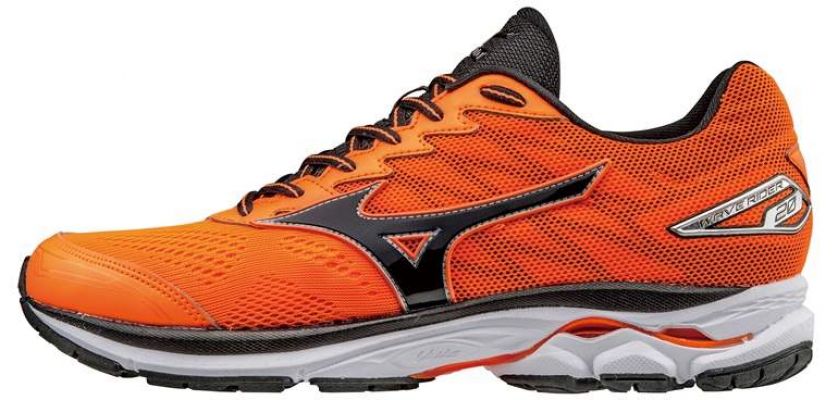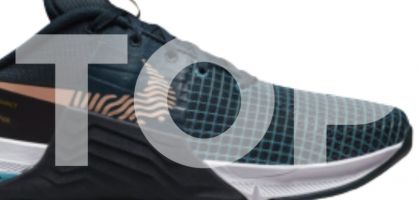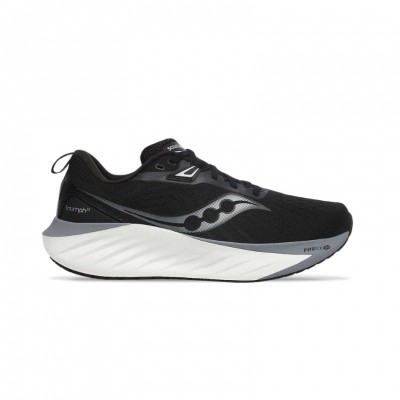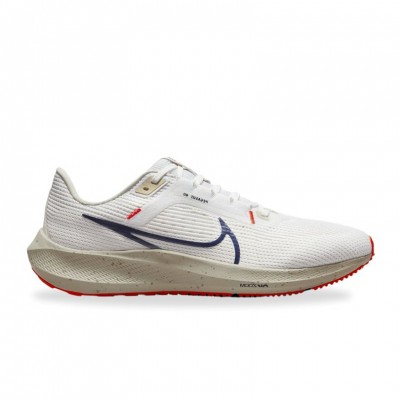Great performance in cushioning, lightness, stability and durability have been the sections that have been renewed version after version to raise the Mizuno Wave Rider as one of the most followed sagas of the Japanese brand, and that, of course, has become a reference model for a huge number of runners. There is no other compelling argument. To talk about the Rider family is to mention Mizuno's longest-lived and best-selling running shoe.
And as we await the arrival of its long-awaited twentieth version, which will soon take pride of place on the shelves of specialized running stores, it is perhaps the most appropriate time to take a brief look back at the evolution of this successful saga, from the first model to the latest shoe that is about to drop. Given that the Mizuno Wave Rider 20 will be a special edition, the Japanese brand will surely surprise its loyal followers with many new features to commemorate this anniversary.
By the way, and let's go back in time, because this approach to the Mizuno Wave Rider will review the entire history of this shoe from the present time to the year 1998. Date in which the Mizuno Wave Rider 1 was launched.
Mizuno Wave Rider 20


Although its launch is just around the corner, as of today, few details are known about the twentieth edition of the Wave Rider. And what novelties and changes will it bring? that is the million dollar question, and many of its fans would like to solve. It looks like the Rider 20 will follow the same path as the new Mizuno Wave Sayonara 4, adding extra cushioning and incorporating all the latest Mizuno technologies. We are waiting for a surprise or two, as Mizuno will be celebrating this special anniversary of this top of the range shoe in style.
Mizuno Wave Rider 19

As it could not be otherwise, the Wave Rider 19 continues to occupy the place of honor in the top of the range of Mizuno. This time it's more of a restyling than a new version, because if we compare the Rider 19 they practically look like a similar model to the Rider 18, and the changes are not too noticeable either. Except for the renewed U4icX cushioning system, focused on providing a softer feel in each stride.
Mizuno Wave Rider 18

The eighteenth edition of the Wave Rider maintained the continuity of the Rider 17, which marked the way forward with the most advanced technologies of the Japanese company. It continued with an eye-catching and very well maintained aesthetics, although emphasis was placed on reinforcing the cushioning, so Mizuno opted to give a millimeter more height to the midsole. Thus, the Rider 18 added a few more grams to its weight (263 grams), but without losing the throne of being the lightest model in its segment, which ensured a shoe for fast running, and with exceptional stability.
Mizuno Wave Rider 17

Although the star materials of its predecessor, the Rider 16, are still present, namely Wave parallel with PebaX Rnew and SR Touch in the heel, the main virtue of the Mizuno Wave Rider 17 is that they guarantee the same cushioning capacity, absorbing impacts, but with a reduced weight, thanks to the new U4ic cushioning system that replaces the AP+. A lighter material, making the shoe more reactive and dynamic, without sacrificing comfort and stability. And all this seasoned with an excellent fit of the hand of the internal fastening straps Dynamotion Fit.
Mizuno Wave Rider 16

The parallel Wave cushioning system with PebaX Rnew, already seen in the Rider 12, together with the AP+ material in its midsole made the Rider 16 behave like a training shoe, the same but different from those of its class because it is an ultralight model with its 280 grams, and a correct cushioning, good flexibility, some stability and a well ventilated upper to move at fast paces both in training and in competition, even under 4:30 minutes per kilometer. In addition, the detail of these Rider 16 is in its Premium insole, which contributes to reinforce the cushioning, and to increase the feeling of comfort. In the heel area the SR Touch system is incorporated to try to maintain a smooth transition.
Mizuno Wave Rider 15

After the complaints and the controversial Rider 15, Mizuno took advantage of the fifteenth version of the Wave Rider to rectify. It corrected the problem of the excessive collar height, and also kept the strong points of the Rider 14 such as the new AP+ midsole. In addition, and to try to adapt to the rise of the minimalist trend, the Rider 15 is carried out a redesign of the Smooth Ride system, which allowed to advance the point of impact of the model.
Mizuno Wave Rider 14

With the launch of the Mizuno Wave Rider 14 came the most controversial period of the saga. There is a substantial change that generates all the controversy. The midsole of the Rider 14 incorporates the new AP+ material. This is presented on top of the sole to provide a softer and more elastic cushioning and feel. However, this change means that the height of the collar is higher, which caused the discomfort of many of its loyal fans because it generated annoying chafing.
Mizuno Wave Rider 13

The most outstanding note of the thirteenth edition of the Wave Rider 13 is that this model lowered the 300 mark. Just by two grams difference, but the Rider 13 was already labeled as a training shoe with great cushioning and responsiveness, as well as remarkable stability and lightness. Mizuno also tried to improve its performance regarding the internal comfort of the model, and more precisely in the rear of the shoe.
Mizuno Wave Rider 12

Mizuno 's latest technologies continue to land at the service of runners to improve their performance. In the Mizuno Wave Rider 12, it is the turn of the renewed Wave system with PebaX Rnew with the mission of providing maximum protection to the metatarsal area. The footnote is that for the first time, Mizuno establishes differences in its men's and women's versions, associated with the shoe's fit.
Mizuno Wave Rider 11
In 2008, the eleventh version of the Wave Rider comes onto the scene, and it does so with a new technology that will mark a before and after in Mizuno. We refer to the Dynamotion Fit system, designed to improve the fit, and that the shoe works as a kind of second skin. Thanks to the Dynamotion Fit, the Wave Rider 11 ensures an adaptation to the natural movement of the foot, in addition to dispersing the forces of impact.
Mizuno Wave Rider 10

Responding to the demands and opinions of runners, Mizuno gave a twist to its iconic model, and the Wave Rider 10 was dressed up with a more groundbreaking and aggressive aesthetic, thanks to its colorful web of synthetic straps. The Japanese brand also laid the foundations to start introducing more differentiated specific lasts, in pursuit of greater or lesser stability.
Mizuno Wave Rider 9
In the Rider 9, which was released in 2006, Mizuno once again opted for the conservative strategy of maintaining the multiple changes experienced in the Rider 8, which were multiple and very noticeable. Weighing close to 315 grams, the Wave Rider 9 renews its outsole to improve traction and contact with the terrain.
Mizuno Wave Rider 8
The great innovation of the eighth edition of the Wave Rider 8 comes from its new AP midsole. The arrangement of this material positions the Rider 8 ahead of all its competitors, since we are talking about a model designed for regular workouts, and whose strengths are its great dynamism and optimum lightness.
In the Rider 8 also deserves special mention the Smooth Ride system, which Mizuno will also use in later models, and that is able to minimize the rapid accelerations and decelerations of the foot during the three phases of the tread, which translates into a more fluid transition and better flexibility.
Mizuno Wave Rider 7
Adding all the innovations of the Rider 6, and adding an upper with a mesh, which favors a better breathability of the foot; and greater comfort, it is not surprising that the Mizuno Wave Rider 7 became one of the most successful models of the saga.
Mizuno Wave Rider 6
New year, 2003, and a new evolution in the Wave Rider family. And perhaps one of the most important, since the performance of the Wave system changes for the better, being a more resistant, lighter and more flexible material. Another detail not to lose sight of is that its 12-millimeter drop will be one of the common features that will be repeated in future models of the Wave Rider as one of the hallmarks of the shoe.
Mizuno Wave Rider 5
Fast forward to 2002, and the Mizuno Wave Rider 5 undergoes a welcome update to its upper. Such a change allows the midfoot support strap of its predecessor to disappear, and therefore slightly decreases its weight, remaining at 326 grams.
Mizuno Wave Rider 4
The novelties of the fourth release of the Mizuno Wave Rider are found in the introduction of two new technologies to the existing ones of the Japanese brand. On the one hand, the VS-1 material in the heel. And on the other hand, the so-called Intercool system, whose mission was to improve the breathability of the shoe.
Mizuno Wave Rider 3
With the great success of the second version, Mizuno opted for the safest option, and designed a strategy of making as few changes as possible so as not to alter the formula that worked well. The X10 compound appears in the outsole in order to increase its resistance and durability, despite the fact that the model gains a little more weight.
Mizuno Wave Rider 2
A year after the appearance of the Rider 1 on the market, the real revolution arrives with the release of the second version. Rider 2 is the shoe that lays the foundations for later models in the series, incorporating the characteristic parallel Wave, which provided greater freedom of movement. This allowed the runner to enjoy a more efficient running experience. All this mix of ingredients gave rise to the Wave Rider 2 to begin to sound strongly, and with the endorsement of a large volume of sales.
Mizuno Wave Rider 1

The first version of the Mizuno Wave Rider 1 was released in 1998. Its initial weight was over 360 grams. The detail to take into account is that these Rider 1 had the privilege of being the first model to incorporate Mizunos exclusive Wave system. Although this, rather, went unnoticed, because the EVA foam era the predominant material in the Wave Rider 1.
Read more news about: Running News



















